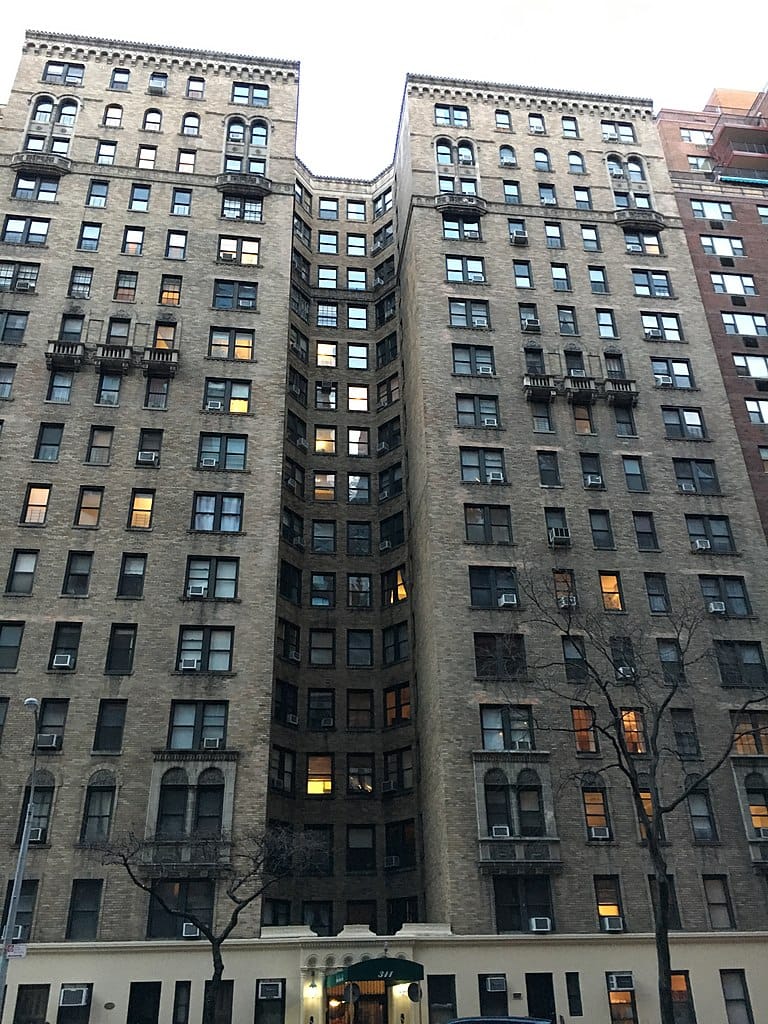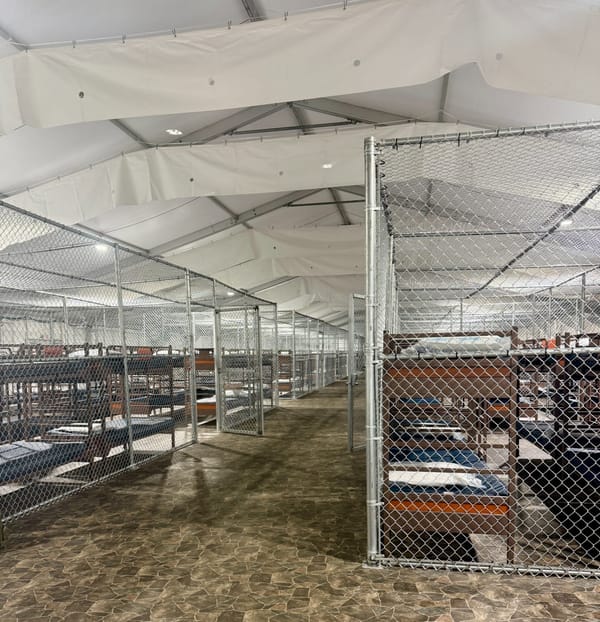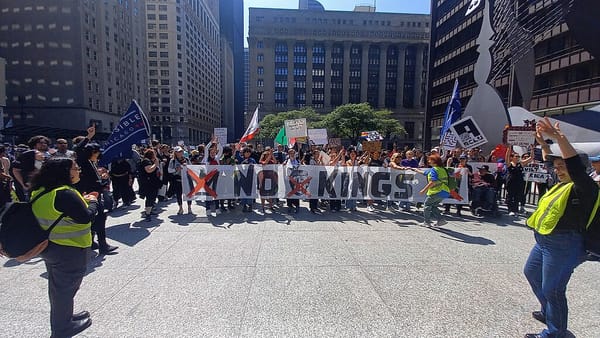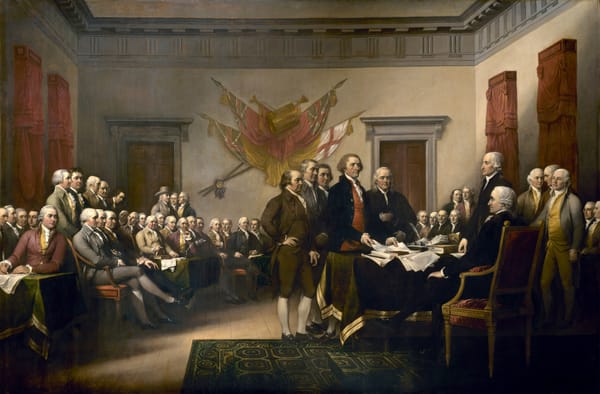A City of Liberalism Means Becoming a City of Yes
Implementing YIMBY reforms in New York City.

According to data from the most recent US Census, taken in 2020, 322,645,091 Americans do not live in New York City1. The city continues to attract residents from across the country and across the world. Yet how many potential residents are missing because they cannot find or afford housing?
From the high-brow culture of Broadway to the grassroots organizing at Stonewall, New York City has been a city rich in culture, history, art, and food. Generations of people have come to this city in search of a better life, and they’ve found it. Dozens of museums scattered across the five boroughs tell the stories of the people who have met like-minded people and built something great.
However, the city is now facing a crisis of its own creation. The price of housing is rising more than residents are able to afford. Over half of renter households are considered rent-burdened. Black families are leaving the city for cheaper homes in the south. Migrants who fled their home countries for a better life are stuck in tents on an airfield that can’t provide shelter during heavy weather. The number of homeless people has been rising across the state.
Those who can no longer afford to live in the city have sought nearby destinations like the Hudson Valley and Long Island, which are now experiencing their own housing crises.
To get affordable housing, qualifying applicants need to enter a lottery and hope to be chosen. Yet each new building will get tens of thousands of applications for just a few hundred units.
How has a city known for its cultural progressivism failed to live up to its own promises? The city has reached the limits placed upon itself in being able to build enough homes for everyone who wants to live here. It is a crisis that has been decades in the making, so it cannot be solved instantly. It will require an ongoing series of political reforms that dismantle the vetocracy and heavy-handed efforts to micromanage the city. The sooner it starts, the sooner New York can reclaim the dynamism of a city for everyone.
Why a City of Yes
Mayor Eric Adams has proposed a group of policies collectively known as the City of Yes. It is a bold plan to shed decades of restrictions on housing stock and provide more people with affordable housing.
The data is clear that producing more housing units leads to lower rents. This has been the case in Minneapolis, Sacramento, Austin, and many other cities across the country. It can happen in New York City too.
With more units available, the city can double down on a housing first policy for the rising number who live precariously in shelters. Rent increases lead to homelessness. Importantly, even a slowdown in rent increases can decrease homelessness, and falling rents have an even greater impact. A housing first policy requires having housing available.
How can we get more housing? There is no single solution that can work, nor should there be. In a diverse city, people will have a wide range of housing needs.
Families in the less dense neighborhoods of Queens and Staten Island may want to build accessory dwelling units (ADUs) as a guest space for a family member or allow a senior landowner to rent out space for extra income. A change in rules will allow ADUs to be built on property owner’s land by-right, without having to consult your neighbors whether they approve of your use of your property.
We can make better use of existing urban space rather than continuing to sprawl out and destroy green space. Removing onerous parking mandates are one way to recycle space away from parking and towards people. Mixed-use zoning by-right allows small businesses to open on the first floor of a building with a few additional stories for residential units. This means residents can walk downstairs to get food at the corner store rather than driving for fifteen minutes and worrying about parking. It also means stores can better serve local customers.
Gentle density also makes sense in areas already served by mass transit across the city. Allowing five-story apartments by-right within a few blocks of a subway station or the Long Island Railroad would be a great way to reduce car dependency and make practical use of the $11 billion spent connecting the LIRR to Grand Central.
In the already dense parts of the city, like Manhattan’s Central Business District, we are seeing office buildings growing empty as more employees work remotely. That provides us a great opportunity to refurbish existing structures for housing. Currently regulations prevent any office building built after 1961 turning into housing. A plan to modernize this will allow any office building constructed before 1990 to be eligible for conversion.
Across all of these modernization policies, buildings can build even higher and denser if they add more affordable units. More affordable units will be critical in curbing the trend of displacement and allowing us to provide a true housing-first policy toward ending homelessness.
Illiberal city policy
In The Death and Life of Great American Cities, Jane Jacobs expresses her scorn for the faux progressives zoners who imposed onerous rules and order upon what a block was allowed to contain. She understood that the value of cities were the people who lived in them. Cities are superorganisms that are ever-changing as people leave and others arrive. They are “an immense laboratory of trial and error, failure and success, in city building and city design.”
Illiberalism over decades allowed a small group of residents to wield vetoes in order to stop building in their backyard. These NIMBYs have abused systems like community boards towards undemocratic means in order to prevent housing of any kind, affordable or market-rate. The need for housing has kept rising even as the supply has stagnated.
Zoning laws were introduced in the decades following World War II as a way to keep people out of communities. Levittown was established in Nassau County in 1951 as a whites-only neighborhood. After the Fair Housing Act of 1968, local governments used alternative means of restricting who was allowed to live there. Zoning laws which mandate detached houses, low density, minimum lot sizes, parking requirements, and other restrictive government mandates raise the cost of the lot without providing a higher standard of safety.
It is very hard to build new housing in New York City. Manhattan Borough President Mark Levine released a report last year which identified many sites in Manhattan which are underdeveloped. Roughly 70,000 units could be constructed in this borough alone, with over 28,000 affordable units, with low-hanging improvements. Even more units could be possible if the state lifted the arbitrary floor-area ratio (FAR) cap that effectively limits residential units to a maximum height no matter the neighborhood.
Take the Garment District of Manhattan, just a few minutes from Times Square. This is a neighborhood close to regional rail services within Penn Station and near the cultural center of the city. Yet the city has mandated that several blocks are zoned exclusively for manufacturing for decades. If the proposed rezoning goes through, the city could add thousands of new units in this neighborhood alone.
Bureaucratic red tape has blocked a lot of potential to house potential residents for decades, although the vetocracy extends to local organizations who resist changes using the same kinds of illiberal tactics. A proposal to change the zoning policies and allow more affordable housing in the upscale neighborhoods of SoHo and NoHo took years amidst fierce political fights. During all that time, people are not being housed. Years were spent fighting against fully affordable housing for seniors at Elizabeth Street. Housing delayed is housing denied.
Organizations like Village Preservation seem more focused on preserving the neighborhood in amber using increasingly out-of-touch rhetoric than allowing their community to organically change in response to the current needs. Demographic trends show how the neighborhood is getting wealthier over time, pushing out poorer residents who can’t keep up. The median salary in SoHo in 2021 was $151,000 a year. The neighborhood has the fourth lowest poverty rate at 7.8%. If SoHo isn’t able to accommodate affordable housing, what neighborhood can? In any kind of crisis, we should expect the people with the most to be able to contribute the most.
Mayor Adams controversially said last year that New York City was full. Was he wrong? The Cocoran Report last year placed Manhattan’s vacancy rate at 2.18%. On average every apartment is vacant for one month every four years, and that month is often used for refurbishing ahead of the next tenant. That does not give renters a lot of options when it comes time to move. That also makes assumptions that the size of an apartment works for that renter, but that size can change in many ways as the superorganism of a household may change over time.
It is hard to create new units but easy to remove them. At the height of the COVID-19 pandemic, employees who worked from home decided to buy the neighboring one-bedroom apartment and combine them to create a home office. Guides exist online encouraging wealthy landowners to convert multi-unit brownstones into single-family townhouses and this isn’t uncommon in the West Village. People’s space needs may change, yet the city is ill-equipped to deal with this inherent dynamism.
When apartments aren’t available, people are unable to move to the city. People are leaving a liberal state like New York for conservative states like Texas and Florida. Is it because they prefer conservative policies or just because housing is cheap there? Every day, people make trade-offs between politics they dislike and being able to afford shelter. These internal migrations reduce New York’s power in Congress and make it harder for liberal policies to have enough votes.
What happens when a city stagnates? Cultural exhibitions no longer have enough visitors to stay open. Tourism suffers, making the city inaccessible to all but the wealthiest. Working class employees leave the city, spending more effort and time commuting. It erodes the cultural diversity that made the city successful.
As people and institutions leave, a shrinking tax base can lead to austerity or a second financial crisis, penalizing those who chose to stay and still believe in what New York City could be.
The value of vibrant cities
A city’s dynamism is something to celebrate. Ethnic enclaves form when migrants first arrive, leading to rich cultural exchange in neighborhoods like Little Ukraine and Koreatown. Even today, migrants from Venezuela have formed an informal “Little Caracas” and public policy should make it easier for them to thrive and forge their own path.
Policies like office conversion make a lot of sense as a way to preserve architectural history while updating its purpose to better reflect the needs of an always-changing city.
Underused lots are also prime locations for affordable housing. A new housing complex is a better use of space in Harlem than a grizzly truck depot. Units built on top of unused lots don’t displace anyone.
It should be recognized that smart theoretical policies alone cannot be enough. If the goal is to build more housing, we need to pursue policies that actually lead to more units. That includes financial incentives from the state. Housing construction has fallen significantly in the city since the tax policy 421a expired, though rising interest rates are also a factor. A new tax program called 485x may pass this year, though its true success should only be measured by the number of new units.
Housing in the city may still be far more expensive than in sprawled communities with more land, and we cannot simply rely on the market nor simply rely on affordable housing lotteries to provide a sense of stability. Market-rate housing is important for many of the public servants who work for the city including teachers for whom getting priced out means pushing them far away from the community they serve. Paying teachers more to cover rent will not work if there aren’t enough units available to start.
The program Section 8 is important for low-income families and expanding it can provide greater stability for precarious households. This is a rental assistance program for those in market-rate housing. As more units get created, it allows those Section 8 vouchers more flexibility over where they want to live. As more units get created, landlords will have less power to discriminate against those with vouchers. As more units get created, people create chains of movement to housing that better fits them.
New York City has long been seen as a beacon of new beginnings. Residents may have had family arrive at Ellis Island a century ago, may have moved here for college a few years ago, or just arrived last night on a bus with only a passport and the clothes on their back. The wonder of any city is that it always changes and it offers everyone something different and unique. Everyone can find a community where they belong, across any kind of identity.
New York City has not done a good job of welcoming new residents. Our policies have often been hostile, and many have noticed that. As people leave the state, it is important to reconsider our existing approach. Does blocking more housing lead to the kind of city we want? No, it has left us with decades of broken promises. It has left the city without the capacity to house those in need and shut out people who would otherwise thrive here.
If New York City is meant to be seen as a beacon of liberty, we need to become a City of Yes. Yes to people, yes to housing, and yes to accepting the inevitability of change.
1. According to the 2020 Census, the US Population was 331,449,281. The population in New York City was 8,804,190.
Featured image is a building in the Upper East Side, by Deansfa




